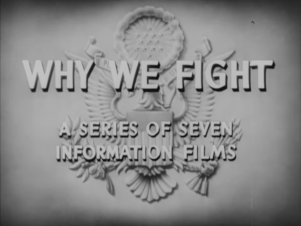American Film Directors
“Five Came Back” is a documentary film series. It dives into the experiences and contributions of five renowned Hollywood film directors. Each enlisted in the United States military to document World War II. It’s based on the book by Mark Harris of the same name. This series offers a unique perspective on the war through the lens of these filmmakers and their cinematic masterpieces. Highlighting the impact on filmmaking after the war.
Key Take Aways:
Diverse Contributions: Highlights the unique experiences and contributions of five renowned Hollywood directors who documented World War II, showcasing their impact on wartime narratives and filmmaking post-war.
Cinematic and Historical Significance: Emphasizes the series’ exploration of the intertwining of cinema and war, offering insights into the directors’ profound personal and professional transformations due to their experiences.
Legacy and Influence: Reflects on the enduring legacy of these directors, illustrating the power of cinema as a tool for historical documentation, artistic expression, and societal change.
Table of Contents
- Five Came Back: World War II Documentary.
- Five Came Back Episodes
- Five Came Back: The Reference Films
- A Closer Look at ‘Five Who Came Back': The Allied Forces' Storytellers
- Five Came Back: Hollywood Directors WWII: What You Need To Know Now
- Frequently Asked Questions
Five Came Back: World War II Documentary.
This article is the first of several on the five men who shaped the American narrative of World War II. More importantly, changing the American perspective on being involved in the war. Rallying Support and bringing a nation together in one focused mission. Showcasing what Civic Duty means.
“Five Came Back” is a compelling series that delves into the lives of five legendary Hollywood directors who contributed to World War II efforts through their filmmaking. It explores the profound impact of their wartime experiences on their personal lives and careers.
Highlighting the haunting memories they carried back home. The series has received critical acclaim for its insightful examination of propaganda, the intertwining of Hollywood with the military, and the moral complexities of their work. Critics praise it as a must-watch for both cinephiles and historians, underscoring its narrative power and historical significance.
Five Came Back Episodes
The Mission Begins
Combat Zones
The Price of Victory
Five Came Back: The Reference Films
Comprised of a collection of 12 original, uncut propaganda films from World War II. These films are discussed in the critically acclaimed docu-series “Five Came Back” and provide a raw and graphic portrayal of the era.
The collection includes titles like “Nazi Concentration Camp,” “The Battle of Midway,” and “The Negro Soldier,” among others. Viewer discretion is strongly advised due to the distressing content of these historical films. These films should be watched by all. They are just as relevant today as they were in the 1940s.
Five Came Back: The Reference Films
Nazi Concentration Camp
Why We Fight
The Battle of Russia
The Battle of Midway.
Thunderbolt.
The Memphis Belle.
Tunisian Victory.
San Pietro.
Report from the Aleutians
The Negro Soldier
How To Operate Behind Enemy Lines
Let There Be Light
A Closer Look at ‘Five Who Came Back’: The Allied Forces’ Storytellers
World War II was filled with stories of courage and sacrifice. This documentary resonates with as much courage and sacrifice as any. The five legendary filmmakers featured in “Five Came Back.” They weren’t just masters of cinema; they were men who put their illustrious careers on hold, braving the front lines of World War II. They embarked on a journey that would forever alter their lives and the landscape of film. Exchanging the comfort of their studios for the uncertainties of war zones.
Their sacrifices went beyond the call of duty. Intertwining their artistry with the tumultuous events of a world at war, to tell stories that would shape the world’s understanding of the conflict and its profound human impact. The impact of this can still be felt today in the lessons on the fight that our democracy faces today and how fascism’s ugly head is trying to rise again. We will look at each contribution made by these Five pioneers throughout several articles.
John Ford – Director
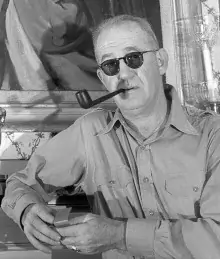
Ford sustained an arm injury from shrapnel while capturing the Japanese attack during the Battle of Midway. He was awarded the Legion of Merit. Serving in the Navy from September 1941 to September 1945.
Known for his contributions to the Western film genre, Ford’s wartime works included “The Battle of Midway” which captured the intensity and stakes of the pivotal battle. Ford, a distinguished movie producer significantly contributed to the Navy’s cinematic efforts during World War II. His work also aimed to capture the pivotal moments following the attack on Pearl Harbor, which galvanized American public opinion and led to the United States‘ declaration of war.
The Battle of Midway: Pearl Harbor’s Aftermath
His exceptional work earned him two Academy Awards for “The Battle of Midway” (1942) and “December 7th” (1943). He also personally documented the momentous Normandy invasion on June 6, 1944. Over his 50-year film career, Ford directed over 140 movies and received six Academy Awards, including four for Best Director.
William Wyler – Director
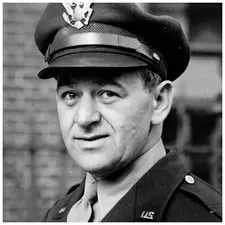
He flew 5 missions with the ‘Memphis Belle’, as part of the 324th Bomb Squadron of the 91st Bomb Group:
26 February 1943 – Wilhelmshaven
14 April 1943 – Lorient
17 May 1943 – Lorient
19 May 1943 – Kiel
29 May 1943 – St Nazaire
William Wyler’s achievements in the Academy Awards are unparalleled. While John Ford leads with four Oscars for Best Director, Wyler follows closely with three wins in the same category. Wyler sets a record with twelve nominations for Best Director, a feat unmatched by any other.
Furthermore, he directed a remarkable thirty-five Oscar-nominated performances, more than any other director. Adding to his illustrious career, Wyler directed thirteen movies nominated for Best Picture, with three of these films winning the coveted award.
The Memphis Belle: A Story of a WWII Bomber’s Crew in Nazi Germany
Wyler was born in Germany in 1902. Before the war, Wyler had already achieved success with films like “Wuthering Heights“. During WWII, he directed “The Memphis Belle: A Story of a Flying Fortress“, showcasing the dangers faced by bomber crews.
He served in the US Army Air Force from 1942 to 1945. Where he received numerous awards: the Air Medal, the European-African-Middle Eastern Campaign Medal, and the World War II Victory Medal.
John Huston – Director
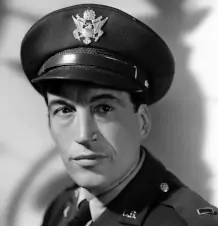
Houston Served in the US Army Signal Corps from 1942 to 1946. Where He was a Rank of Major.
The creator of classics like “The Maltese Falcon“, Huston’s wartime documentaries like “Report from the Aleutians” provided a raw, unfiltered look at the life of soldiers on the front lines.
Let There Be Light
A powerful documentary by John Huston remained unseen for over three decades due to military concerns. “Let There Be Light” is a film showing the realities faced by veterans undergoing treatment for combat-related “battle fatigue” now known as PTSD.
Taking place at New York’s Edgewood State Hospital. Its initial suppression stemmed from the U.S. military’s reluctance to show American soldiers in a vulnerable state. Especially during a time when the government was grappling with the challenge of returning veterans to civilian jobs. Concerns were that any portrayal of servicemen as unstable or potentially dangerous could be detrimental.
The film finally premiered at the 1981 Cannes Film Festival, offering an early, raw glimpse into PTSD and highlighting the effective treatment methods of the hospital for many of its patients. In an attempt to counter Huston’s portrayal, the army produced “Shades of Gray,” a film that recreated the symptoms and treatments shown in Huston’s documentary.
However, due to its inferior acting and script, “Shades of Gray” failed to serve its intended purpose. Despite its shortcomings, it remained the Army’s official narrative on PTSD for many years.
Frank Capra – Director
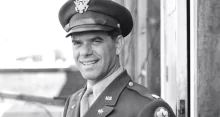
Capra served in World War II in The US Army Signal Corps from 1941 to 1945. He left as Colonel. He also fought in World War 1. Capra was an Italian immigrant and became a U.S. citizen in 1920.
Perhaps best known for “It’s a Wonderful Life“, Capra’s wartime efforts were aimed at boosting morale. His series “Why We Fight” was particularly influential, providing context and rationale for America’s involvement in the war.
Why We Fight
As the United States entered World War II in December 1941, Frank Capra returned to the Army, taking on the role of an official propagandist. He produced the widely acclaimed series “Why We Fight,” which he considered his most significant contribution to cinema.
Capra saw this series as a response to the works of German filmmaker Leni Riefenstahl, particularly “Triumph of the Will.” His efforts were recognized when “Prelude to War,” the first film in the series, received the Academy Award for Best Documentary Feature in 1942. Prelude to War” still serves as the best Propaganda film showing how to rally a nation.
George Stevens – Director
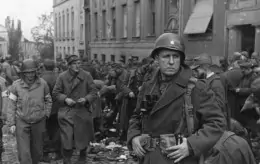
Stevens served in the U.S. Army Signal Corps from 1943 to 1946. He was a Lt. Colonel. Out of the five that came back. He was most affected by his work documenting D-Day landings and the concentration camps.
His work vividly captured the efforts of the Allied forces, showcasing their pivotal role in these historic events, including the leadership of figures like Dwight D. Eisenhower and the successful campaigns such as the Battle of Midway and the amphibious assaults on key Japanese-held islands.
Having directed numerous comedies before the war, most notably Gunga Din in 1939. Stevens’ wartime footage, especially from the D-Day landings and the liberation of the Dachau concentration camp, captured the grim realities of war.
Under the direction of General Eisenhower. Stevens’s unit captured pivotal moments of the war, including D-Day—the only color footage of the Allied European Front—, the liberation of Paris, and the historic meeting at the Elbe River between American and Soviet forces.
Stevens’s unit documented the harrowing scenes at the Duben labor camp and the Dachau concentration camp. Notably, Stevens played a crucial role in preparing this footage for the Nuremberg Trials. Recognizing its historical significance, the Library of Congress added his wartime footage to the United States National Film Registry in 2008 as an “essential visual record” of World War II. It was the most important work Stevens did in the war.
The Diary of Ann Frank
The profound impact of his war experiences was evident in the dramatic shift in his filmmaking post-WWII. Stevens was not able to produce the comedic works of pre-WWII films. When he directed “The Diary of Anne Frank,” knew well the horrors of the Holocaust, having been among the first to film the atrocities in the death camps at the time of their liberation.
Released in 1959 The Diary of Anne Frank was nominated in 1960 for eight Academy Awards and won three. That same year, Stevens served as the head of the jury at the 20th Berlin International Film Festival and was a jury member at the 8th Moscow International Film Festival in 1973.
Impact on Cinema and Society:
The experiences of these directors during the war profoundly impacted their post-war works. Their first-hand exposure to the horrors, heroism, and complexities of war gave depth and authenticity to their subsequent films. Moreover, their wartime documentaries served multiple purposes:
Propaganda: The films were used to build support for the war effort and boost the morale of troops and civilians alike.
Historical Record: These films captured real events, providing future generations with a visual record of World War II.
Artistic Expression: Despite being rooted in reality, the directors’ unique styles and perspectives shone through, making these documentaries significant artistic works in their own right.
Legacy:
“Five Came Back” not only celebrates the contributions of these five directors but also underscores the power of cinema as a tool for communication, education, and change. The series itself serves as a reminder of the sacrifices made during WWII and the role of filmmakers in shaping our understanding of history.
The intertwining of cinema and war, as portrayed in “Five Came Back“, offers a unique lens through which to view history. The series stands as a testament to the enduring impact of film on society and the indelible mark left by these five directors on the world of cinema.
Five Came Back: Hollywood Directors WWII: What You Need To Know Now
Frequently Asked Questions
Who are the five Hollywood directors featured in “Five Came Back”?
The documentary features John Ford, William Wyler, John Huston, Frank Capra, and George Stevens, who documented World War II.
What is the significance of “Five Came Back”?
It explores the contributions of these directors to the war effort and how their experiences influenced their post-war filmmaking careers.
How did these directors contribute during WWII?
They created propaganda films, documented key events like D-Day, and provided a visual record of the war’s realities.
What impact did their wartime experiences have on their careers?
Their firsthand exposure to war deeply influenced their post-war films, adding depth and authenticity.
Why is this documentary important?
It highlights the role of cinema in wartime propaganda, historical documentation, and its impact on societal understanding of war.
